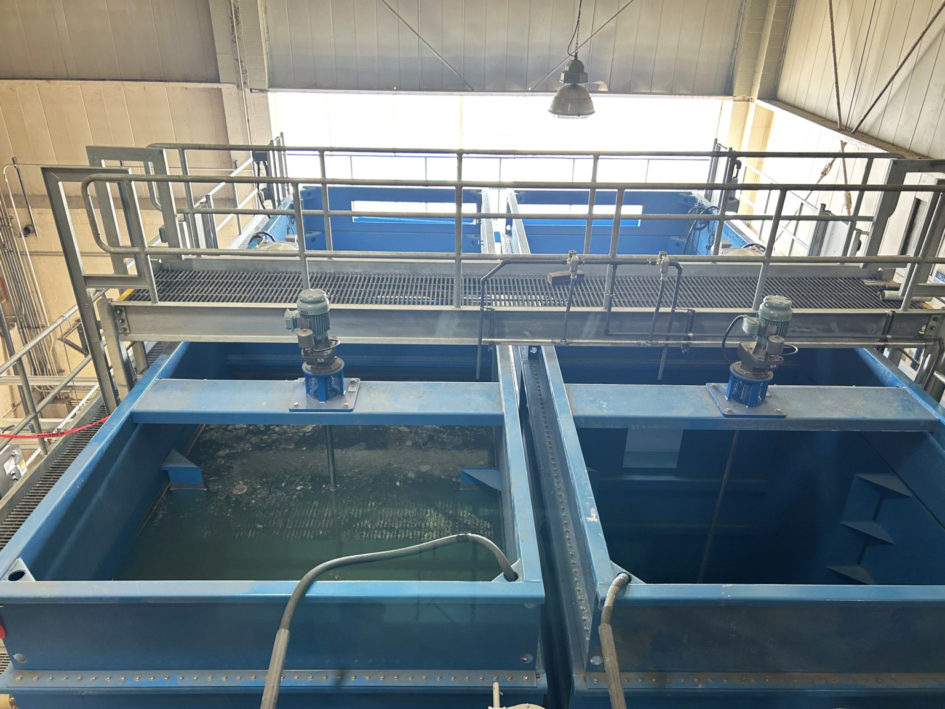A novel approach to addressing a new effluent mercury regulatory limit will help a northern Minnesota town’s wastewater treatment facility (WWTF) remain in compliance under its National Pollutant Discharge Elimination System (NDPES) permit. The City of Ely hired the team of AE2S and JPJ Engineering in 2017, to develop a wastewater facility plan to address the WWTF’s potential to exceed the challenging effluent mercury limit of 11.0 ng/L monthly with a maximum of 25.3 ng/L per day. The City’s WWTF was also facing significant infiltration/inflow (I/I) and limited funding to address the issues.
The existing facility’s process included screening, grit removal, primary settling, pumping, bio-p splitter to biologically remove phosphorus, anaerobic-anoxic-oxic (AAO) to remove nutrients, final clarification, sand filtration, and disinfection. Some of the deficiencies identified in the existing facility included the condition of influent screens, wear on the grit classifier and washer, and HVAC issues in the preliminary treatment building. In addition, the upflow sand filters experienced plugging and hydraulic limitations, while the biosolids storage was insufficient, and the dissolved air flotation thickeners (DAFT) were inoperable.
The Ely WWTF needed a cost-effective solution that could remove particulate mercury during average and peak flows, prevent the hydraulic washout of activated sludge in the clarifiers, and alleviate the lack of sludge storage.
AE2S evaluated several technologies, including flow equalization, membrane bioreactor, storm wet-weather control using cloth media filters, and additional biosolids storage. After a successful pilot study between January and August 2020 proved cloth media filtration could meet the effluent mercury limit and treat wet weather flows to address the I/I issue, AE2S began design of the filtration system in early 2021.
Additionally, AE2S recommended the following improvements:
- Fine screen
- Grit classifier/washer
- Generator
- Scum skimmer
- Chemical feed
- Roof replacement
- New lighting, railings, and access safety improvements
- Bio-P splitter box slide gates
- Collection system I/I improvements
The project includes the demolition of the existing sand filtration that was ineffective for mercury removal, as well as the installation of two new cloth media filtration systems. Each of the cloth media filtration systems has a hydraulic capacity of 3.0 million gallons per day (MGD). The $8.5 million project includes a new biosolids storage tank and mixing system, new influent screen, and other improvements.
Funding concerns about the project were addressed when AE2S Nexus helped Ely secure $8.1 million in program funds to pay for approximately 96% of the project. Sources of funding include:
- Point Source Implementation Grant
- Louis County Block Grant
- Water Infrastructure Fund
- Iron Range Resource and Rehabilitation Board
- Clean Water Revolving Fund
The project is substantially complete and the new cloth media filters have demonstrated excellent removal efficiency. Analytical results conducted during operational testing of the filters have shown effluent mercury concentrations of less than 1 ng/L, an order of magnitude less than the permitted limit.
AE2S was the prime consultant on the project and provided process, structural, and electrical engineering services as well as instrumentation and controls. JPJ provided the civil engineering and survey, KFI oversaw mechanical engineering, and Oertel was the architect on the Ely WWTF project. AE2S appreciates the opportunity to work with its teaming partners and the City of Ely on this innovative and important project.

